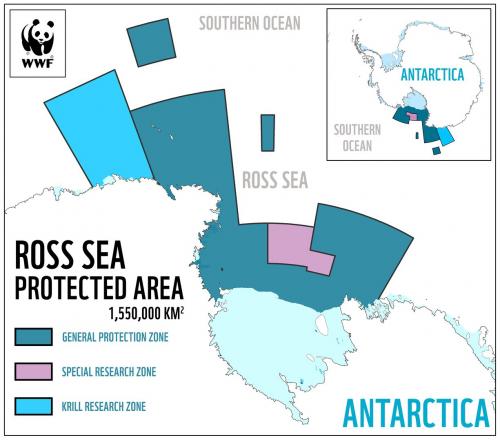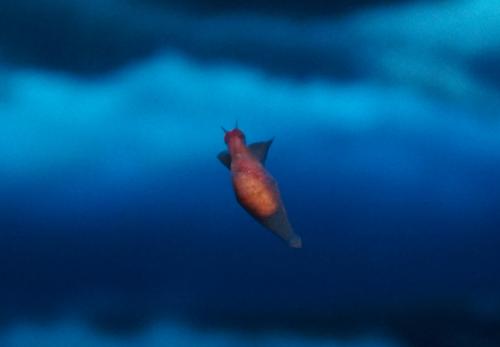On October 28th, the 24 member countries that make up the Commission for the Conservation of Antarctic Marine Living Resources (CCAMLR - pronounced "CAM-ler") voted to protect an expansive portion of the Southern Ocean known as the Ross Sea for the next 35 years. The agreement will prevent the development of an international fishery in an area of ocean about twice the size of Texas. Similar to the international environmental protections on the Antarctic continent itself, the agreement prohibits mining of the seafloor within the new Marine Protected Area (MPA).

The Ross Sea is considered by ocean scientists to be the last pristine marine ecosystem on Earth. Located south of 60 degrees south latitude, the ice floes and hurricane strength winds have isolated the Antarctic from the heavy fishing pressure experienced by many other areas of the global ocean. Additionally, its distance from sizable human populations coupled with its strong terrestrial environmental protections have greatly limited pollution in the Antarctic. For reasons of environmental happenstance as well as human intervention, the Antarctic mainland and the Southern Ocean have largely been left to follow the path they began when the continent separated from Gondwanaland about 35 million years ago.

The Antarctic's unending summer sunlight and nutrient-rich waters support an annual phytoplankton bloom that drops the limitless underwater visibility to near zero. With their reproductive cycles timed to take advantage of this, euphausiid shrimp called "krill" and pteropods - swimming snails known as "sea butterflies" - vigorously filter and eat the tiny algae. Bridging gaps in the food web between single-celled photosynthesizers and larger animals, massive populations of krill and sea butterflies are themselves consumed by everything from notothenioid "ice" fish, to baleen whales. In fact, ALL of Antarctica's terrestrial wildlife depends on this relationship. Though the Ross Sea makes up only about 3 percent of the Southern Ocean, it supports an estimated 30,000 Pacific Weddell seals, 3 million Adelie penguins, 240,000 emperor penguins, 21,000 minke whales, and 3,400 orca whales. With this much wildlife in such a relatively small area, CCAMLR members began negotiating to preserve the Ross Sea in 2011, a process that largely concluded this week with the designation of the new MPA.


Comments